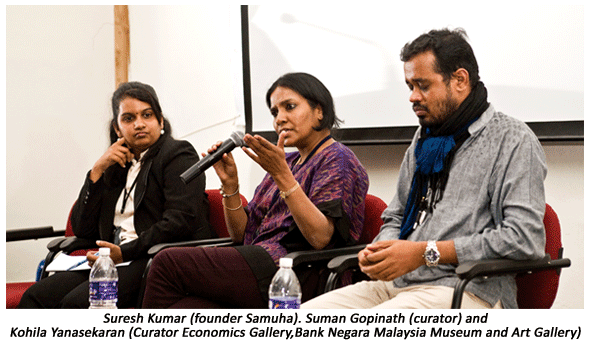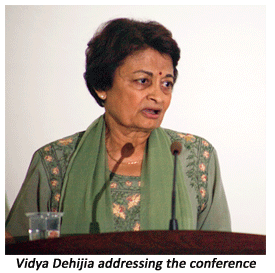- Prelude
- Editorial
- 'Public Sculptures are the Public's own Consciousness'
- Stimulating Thoughts
- Sculptural Traditions and Contemporary Art Practices
- Sculpting out a Third Dimension from Madhya Pradesh
- About Nostalgic Dragonflies and Homes in the Bags: Sculptural Snapshots from the North-East
- A Concise Chronicle of Bengal's Modern Sculpture
- Neo-sculptural Identity: Six Young Sculptors
- From Object to Experience: Notes on American Sculpture
- In the Domain of Drama Sculptures of S.Nandagopal
- Satish Gujral : Sculpting the Inner Form
- Transformation of Articulations: Mrinalini Mukherjee
- The Experiential Quotient in the Sculptures of Ravinder Reddy
- Shresta Rit Premnath A Passion for Structure
- The Anatomy of Melancholy: Sculptures of Rajesh P Subramanium
- A Crusader of/for Site Specific Public Art: Subodh Kerkar
- Installation Practices in and around Santiniketan
- A Wall is a Screen: A Promenade Film Street Performance
- Jaeger-LeCoultre An Overview
- Regency Style: Regency Furniture
- Designing the Streetscapes: Visual Elements of Pedestrian Corridors
- Sculpture Rules It All
- The Triumph of the Eternal
- Artist Index and Statistics- Anish Kapoor
- Auction Reports
- Musings from Chennai
- Art Bengaluru
- Art Events Kolkata: October-November 2010
- Mumbai Art Sighting
- An Evening of Interaction
- 6th Asian Museum Curators' Conference
- Swedish Art in India
- Couple of Difference : Recent sculptures of Karl Antao
- Previews
- In the News
- Sotheby's : Important Watches Geneva
ART news & views
6th Asian Museum Curators' Conference
Volume: 3 Issue No: 11 Month: 12 Year: 2010
by Nalini S Malaviya

The 6th Asian Museum Curators Conference was held recently in Delhi and Bangalore from 19th to 22nd October. Initiated by The Japan Foundation in 2006 the conference was organized in India in collaboration with the India Foundation for the Arts and had participant curators from art museums from Korea, Malaysia, Singapore and Japan along with independent curators from India. In view of the shifts in the function of the curator, evolving spectator-curator interactions and the growing importance of curation of art and other cultural production, the conference provided a much needed forum to discuss aspects related to curation in the Asian context. According to the concept note, the conference sought  “to address the expansion of curatorial activity and the role of the curator as well as the dialectical relationship between curators and spectators, who today are positioned as audiences and publics but also often participate as curators and consumers.”
“to address the expansion of curatorial activity and the role of the curator as well as the dialectical relationship between curators and spectators, who today are positioned as audiences and publics but also often participate as curators and consumers.”
Vidya Dehijia, the Barbara Stoler Miller Professor of Indian and South Asian Art at Columbia University delivered the keynote address and drew upon her own experiences in curating exhibitions for a global audience, while Hiroko Ikegami, Annapurna Garimella, Rahaab Allana and other speakers made presentations that covered topics ranging from an overview of curation; political curation: audiences v/s publics, historicizing art events, archives and collections, design and the spaces of curation and alternative art and curation. Each of the participants also gave a brief introduction on their background and their curatorial practice and context within which they work.
The conference, a major part of which was held in Bangalore provided an opportunity for sharing specifics of individual curatorial practices within institutional frameworks and gave valuable insights into art practices specific to regions and opened up prospects for collaborating and in expanding the Asian network of professionals in the field of curatorship and arts management.